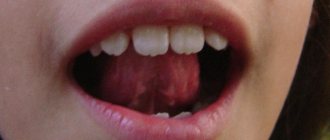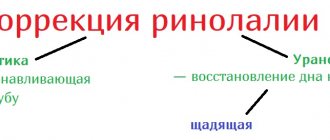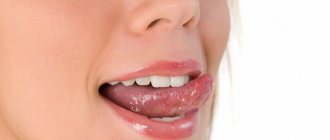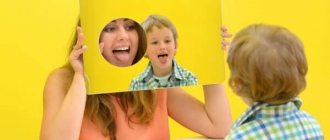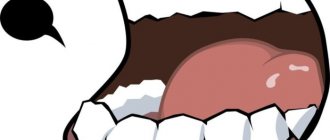"EXPOCOT 2011" - PRESENTATION OF THE BURMAN BREED
Burmese cats are luxury, exclusivity, grace and charm!
Burmese cats are the embodiment of natural harmony, beauty and perfection! These cats are elegant, have a refined appearance, in which simplicity is adjacent to nobility.
The main feature of the European Burmese breed is its short, glossy, tight-fitting coat, silky to the touch. The coat of Burmese cats is smooth, shiny, reminiscent of satin, and has a palette of colors unique to this breed - brown (sable), chocolate (champagne), lilac (platinum), blue. The brightest and most eye-catching color of Burmese cats is brown, also known as sable. But touching the fur of a Burmese cat evokes even greater delight. It seems as if the most expensive silks of the East are enveloping your palm. Each hair, colored from the root to the very tip, fits tightly to the cat's body. The fur softly shines and shimmers with every movement of the animal. Touching this luxury, you forget all your affairs and problems, and you can no longer deny yourself the pleasure of holding this miracle in your hands.
The character of the Burmese cat is no less unique than its colors and it can be safely called its main advantage. European Burmese are very friendly and playful animals. These cats love the company of people very much, which is why, in terms of their attitude towards people, they are often compared to dogs. The well-known saying that a cat walks on its own has nothing to do with Burmese cats. This cat has a completely unique feature - a genetic taboo on human skin, therefore the Burmese cat is not capable of aggression towards humans and under no circumstances does it scratch or bite. The European Burmese is absolutely non-aggressive, patient in relationships with children, and easily learns the rules of behavior, thanks to its high intelligence. It is thanks to its character that the European Burmese is becoming more and more popular every day almost all over the world. European Burmese are all elegance, grace and tact. Her boundless love, tender and touching attitude towards people amazes and surprises.
I will be glad to introduce you to my animals, tell you about their achievements, show many wonderful photographs, share useful information, and maybe help you find a little loving friend.
The nursery is engaged in breeding only the breed of cats - EUROPEAN BURMA (Burmese).
I tried to find for you a lot of interesting and useful information about the Burmese breed:
- history of the Burmese breed
- Burmese breed standards
- Burmese pedigree database
- main differences between European and American Burmese cats
- family tree of the ancestors of the Burmese breed
- gallery of photos of kittens (European Burmese)
- film about Burmese apartments
- care, maintenance and feeding of kittens (European Burmese)
- articles about the Burmese breed
- stories of happy kitten owners (European Burmese)
- rules for selling kittens
- contract for the sale of kittens and much, much more!
°°°°°°°°°°°°°°°°°°°°°°°°°°°°°°°°°°°°°°°°°°°°°°°°°°°°°°°°°°°°°°°°°°°°°°°°°°°°°°°°
N, Sh. M, [x'1;
occlusive fricatives (affricates) [ts], [h];
trembling (vibrants) |р], [р']
(see Fig. 5).
Consonant sounds are formed by creating a barrier in the oral cavity. There are five main types of barriers (a bow exploded by an air stream; a bow with the simultaneous passage of air; a gap into which an air stream passes; a bow that turns into a gap; a barrier formed by a tense tip of the tongue vibrating under the pressure of an air stream). The largest number of consonant sounds in the Russian language according to the method of formation are fricative, in which the movable organs of the articulatory apparatus, approaching the stationary ones, form a gap. It is they and the sounds that include the element of the gap (cleft-cleft and tremulous) that are most often disrupted, since for children the creation of an obstacle in the form of a gap is the most difficult due to the inability to use visual and kinesthetic control. In this group of sounds, [f], [f'], [v], [v'] are usually not violated, since the child sees their articulation (visual control) and easily feels the directed air stream with the back of his hand (tactile control). The teacher’s work on these sounds creates the basis for the speech therapist’s correctional work on fricative sounds.
Classification of consonant sounds by place of formation:
labiolabial [p], [p'], [b], [b'], [m], [m']; labiodental [f], [f'], [v], [v'];
* The sounds highlighted in this way here and below are violated most often.
anterior lingual (formed by the front part of the back of the tongue, with different positions of the tip of the tongue), the tip of the tongue at the top - [t], [d], [n], [l] , [l'], [r], [r'], [ w], [f], [sch], [h];
tip of the tongue below - [t'], [d'], [n'], [s], [s'], [z], [z'], [ts];
middle language [jj;
back-lingual [k], [k'], [g], [g'j, [x], [x']
(see Fig. 6).
All disrupted sounds in children belong to the lingual group, of which the most frequently disrupted sounds are in the anterior lingual group. This is due to more subtle, differentiated movements of this part of the back of the tongue, forming various barriers (bow - [t], [t'], [d], [d']; bow with simultaneous passage of air - [n], [n'] , [l], [l']; vibration - [r], [r']; gap - [w], [g], [sch], [s], [s'], [z], [z ']; a bow that goes into a gap - [h], [ts]). In this case, the front part of the back of the tongue can work simultaneously with the tip of the tongue: both the tip and the front part of the back of the tongue rise upward ([t], [d], [n], [l], [l'], [r], [r '], [w], [g], [sch], [h]) or the tip of the tongue is located behind the lower teeth (incisors), and the front part rises up and forms a barrier with the alveoli ([t'], [d'] , [n'], [s], [s'], [z], [z'], [c]). Therefore, some children may be challenged by the first group of sounds, others by the second, and in some cases by both groups. In this group of sounds, [t], [t'], [d], [d'], [n], [n'] are usually not violated, since they are explosive, instantaneous, it is easier for children to pronounce them. The teacher’s work on these sounds creates the basis for the speech therapist’s corrective work on all front-lingual sounds.
Sound table for speech therapy
Online speech therapy exercises
Speech therapy of vowels:
|
| | | | | | | | | Difficult vowels:
e;e;yu;ya |
e;u;e;y;a;o;e;ya;i;yu | Setting consonant sounds and letters:
|
| | | | | | | | | | | | | | | | | | | Difficult consonants:
b;p | w;w | z;s | g;k | s;ts | v;f | r;l | p;l | r;p;l | z;s;c | h;f;sh;sch;ts;x |
Online exercises () are also the basis for successful learning at school. Some speech therapy disorders disappear in children with age. Here on the site you will find exercises for setting all the sounds of the Russian alphabet, and also teach your child to read. Normally developing children have the ability to acquire language. Speech therapy children need targeted, systematic care. In subgroup speech therapy classes, children with similar speech disorders are brought together. Speech is an important means of communication between a child and the world around him. Keep a special journal of your children's successes. You can do this on a special YouTube channel.
Syllabic tables are used at the stage of automation of assigned sounds in children of primary school age who have mastered the technique of syllable reading. You can also adapt syllable tables for the development of sound analysis and synthesis of words, for the development of reading techniques (by building up words). Instructions for use: 1. Read the first syllable of the left column, add the automated sound and attach a vowel to it, the main condition is to get the word. sample: (LU – SH – A – LUSH) 2. Name the automated sound, add a vowel from the right column. We select a syllable or letter from the rightmost column - we get a word. sample: (W - A - D - STEP) - Sound automation W - Sound automation C - Sound automation Z - Sound automation L - Sound automation P
Working with sound tables
Work with syllable tables can go in two directions, depending on the type of speech disorder the child has. In the case of FFN, the emphasis is on carefully listening to the sequence of syllables pronounced by an adult and speaking slowly and accurately. At first, the child not only listens to the syllables, but also looks at the speaker’s face in order to see the articulation and reproduce it correctly. Then the adult pronounces the syllables, covering his face with a “screen” (piece of paper) so that the child relies only on hearing. Some children find it easier to repeat syllables with their eyes closed (due to greater concentration of auditory attention). You can invite your child to play “Scouts” or “Telephone”. Instructions: “Listen carefully and repeat as I did.”
Dysarthria and tables
Syllable tables are good to use when correcting an erased form of dysarthria. When a child can correctly pronounce both sounds being practiced, but he does not have enough speed of tongue movements to switch from one sound to another (for example, from the upper sounds Ш, Ж to the lower С and З). In this case, the emphasis is placed precisely on the speed of pronunciation of these syllables. Of course, we begin the work by slowly repeating the syllables, gradually increasing the tempo.
Sounds in Russian language table
Our speech is associated with the movements of the speech apparatus. In case of defects in sound pronunciation, articulation gymnastics occupies a large place in speech therapy work, which is used both in the production of sounds and at the stage of automation of sounds. Speech therapists offer exercises and games that are aimed at automating sounds in syllables, words, sentences and speech. Subtle movements of the articulatory apparatus contribute to the improvement of movements and the formation of correct speech of the child. On this page is a list of speech therapists' materials on the topic of sound automation.
Letters and sounds table for speech therapist
When a child passes the 5-year mark, he develops correct pronunciation. Of course, the situation is not always cloudless, but defects can be corrected without problems if you perform speech therapy exercises on the sound “r”. Experts say that there is no need to sound the alarm over trifles, but it is necessary to monitor the child’s development.
In speech therapy work
Goal: Acquaintance with the sound system of the Russian language as the basis for a speech therapist’s work on the production of sounds, mastering the practical skills of seeing and feeling which organs of articulation, what kind of obstruction they create in the oral cavity, as well as hearing various shades of unclear pronunciation of sounds in one’s own and others’ speech.
Plan:
1. Vowel sounds. Characteristics based on various characteristics.
2. Consonants. Characteristics based on distinctive features.
a) classification of consonant sounds according to their participation in the articulation of the soft palate and the functioning of the vocal folds.
b) classification of consonant sounds according to place of formation.
3. Reference sounds.
Control questions:
1. Describe the vowel sounds. By what criteria are they classified?
2. What groups are the consonant sounds of the Russian language divided into according to place, method of formation, correlation of resonator cavities, participation of the voice and participation of the middle part of the back of the tongue? List these groups, name the sounds included in each group.
3. Expand the role of the relationship between articulatory and acoustic features of sounds of the Russian language in the process of formation and correction of sound pronunciation.
Practical tasks:
1. Draw speech therapy profiles of phonemes in a notebook: p; b; T; With; h; c; w; and; h; sch; d; R; l. Describe the statics (structure) and dynamics of their formation.
2. Based on the literature studied, fill out the following table:
table 2
| Sounds whose pronunciation is impaired | Reference sounds |
| Sounds similar in place of origin | Sounds that are identical in their method of formation |
Guidelines and additional material for the work:
In order to learn how to correct incorrect pronunciation of sounds, a speech therapist must know
how speech sounds are formed, on what grounds and into what groups they are divided, what sounds or what groups of sounds are most often violated in children and
think about
why this happens. For example, why in a group of whistlers (s, s', z, z', ts) in some cases all 5 sounds may be disrupted, in others only three (s, z, ts), or two (s', z') , or one (ts). To do this, it is necessary, first of all, to master the classification of sounds of the Russian language and master the practical skills of seeing and especially feeling which organs of articulation, what kind of obstruction they create in the oral cavity, as well as hearing various shades of unclear pronunciation of sounds in the people around them.
Each individual sound is characterized by a unique combination of various features - both articulatory and acoustic. Knowledge of these signs is necessary for the correct organization of work on the formation and correction of sound pronunciation. The corresponding areas of the cerebral cortex control clear perception and differentiation of sounds according to acoustic characteristics, i.e. provide phonemic processes necessary for the formation of correct pronunciation.
When starting to classify the sounds of the Russian language (the first and second points of the plan), please note that according to articulatory characteristics, speech sounds are divided into vowels and consonants. The main criterion for such separation is the presence or absence of an obstacle in the oral cavity when pronouncing them.
In addition, according to their participation in the articulation of the soft palate, all sounds are divided into nasal and oral , and according to the work of the vocal folds - into vowels, sonorants, voiced voiceless sounds.
Vowel sounds play an important role in our speech: their distinct, intelligible pronunciation contributes to speech intelligibility (clear diction), its smoothness, which depends on the duration and uniformity of speech breathing, and melody, which is achieved by changing the tone of the voice.
Depending on the degree of vertical elevation of the tongue, vowels are:
• top lift ([i], [s], [y]);
• medium rise ([e], [o]);
• lower rise ([a]).
When vowels are formed, not the entire tongue rises to the palate, but its individual parts: front, middle, back. Due to this, the volume and shape of the oral cavity changes. When forming vowels:
• front row ([i] i [e]) the front part of the tongue rises:
• the middle row ([a] and [s]) involves the middle part of the tongue;
• back row ([y] and [o]) the back of the tongue rises.
In the formation of vowels, along with the tongue, the position of the lips plays a significant role. By pulling the lips forward, labialized vowels ([o] and [y]) are formed. When pronouncing non-labialized vowels [i] and [e], the lips take a smiling position. The vowels [ы] and [а] are pronounced with a minimal degree of participation in the articulation of the lips (the lips occupy a neutral position) and are also classified as non-labialized.
Consonant sounds are formed by creating barriers in the oral cavity with movable organs of articulation. Consonants are classified as follows:
•according to the method of formation (stop-plosive, stop-passive, fricative (fricative), stop-friction, tremulous (vibrants);
•by place of formation: labiolabial, labiodental, anterior lingual;
•according to the degree of tension in the middle part of the back of the tongue: hard, soft.
When preparing the child’s articulation organs for the correct pronunciation of sounds, the speech therapist uses not only special articulatory gymnastics exercises, but also the so-called “support” sounds. Sounds that are close in method and place of formation to the sound that needs correction can be considered reference sounds. So, for example, for the sound [s], these sounds are [f] and [i]. On [f] you can practice an air stream in the center of the tongue, on [i] - raising part of the back of the tongue with the tip of the tongue lowered behind the lower incisors. By practicing reference sounds, we work not only on the articulatory apparatus, but also on speech as a whole. The material on reference sounds is presented in detail in the book by M.F. Fomicheva (see paragraph 3 of the list of references).
Literature:
1. T.B. Filicheva and others. Fundamentals of speech therapy. - M., 1989. - P. 27-29.
2. Fundamentals of speech therapy with a workshop on sound pronunciation / Ed. T,V. Volosovets.-M., 2000.
3. Fomicheva M.F. Education of children with correct pronunciation. - M., 1981.
4. Articulation of sounds in a graphic image. Educational and demonstration material. - M., 2000.
5. Bondarko L.V. Sound structure of the modern Russian language. - M., 1977.
